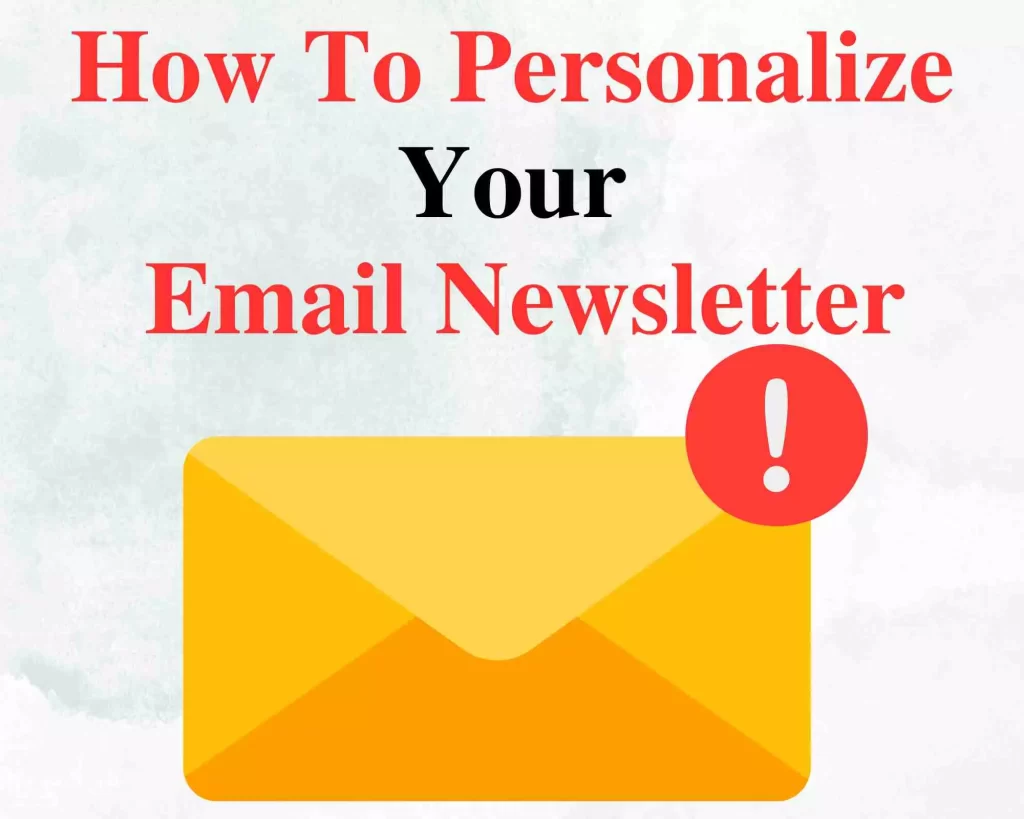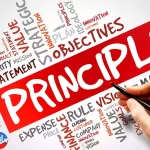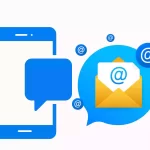Sending an email to an audience compete with hundreds of other emails in the audience’s inbox to guarantee that your email newsletters stand out from the crowd and give actual value to your subscribers. The solution is you must know how to personalize your email newsletter.
By customizing your emails to your audience’s interests, preferences, and behaviours, you can build a more engaging and successful email newsletter that connects with your subscribers and generates genuine results.
Please read our guide on how to design an email that gets opened.
In this post, we will learn what email newsletter personalization is and how to utilize it to boost productivity.
What Is Email Personalization, And Why Is It Necessary?
Email Personalization refers to creating emails and campaigns for different parts of the target audience and occasionally for each subscriber.
They started personalizing mailing lists 36 years ago, putting the recipient’s name in the subject and body of the message. That then aided in attracting attention in the email box.
Personalization has gone a long way since then. Additional options have emerged, such as the development of unique promotional codes, the creation of individualized product choices, the search for the most efficient sending time, and the sending of letters in response to user action or inactivity.
Why Is It Important To Personalize Your Emails
Personalizing your emails has various advantages, such as:
1. Improved conversion rates
When you create an email precisely for the recipient, the content and message have greater resonance since they mean something. Generic emails impede conversions.
2. Increases open rates.
Personalization, especially in the subject line, is a wonderful strategy to enhance your open rates. Personalizing your emails may really raise your open rates by a huge 26%. Remember, your subject line is your first opportunity to create an impression. To establish an impression that generates an open, make it as personal as you can.
3. Better lead nurturing
Lead nurturing is fuelled by content. When you personalize your emails based on each user’s interests and behavior, your marketing will build a better connection and convert more prospects into your pipeline.
Moreover, a survey shows that 41% of customers abandoned a firm email owing to a lack of personalization. Certainly, no one wants to feel like a number while communicating with them.
These are part of the reasons why personalization is so important. Providing individualized experiences along the buyer’s journey is what will transform leads into customers and consumers into passionate brand supporters.
Here are six basic methods on how to personalize your email newsletter.
6 Tips On How To Personalize Your Email Newsletter
As someone who has subscribed to several email newsletters over the years, I know personally how easy it is for these emails to be lost in the flood of promotions, updates, and spam that fills inboxes on a regular basis.
Here are some pointers on how to personalize your email newsletter:
1. Gather subscriber data:
The first step in personalizing your email newsletter is gathering as much data as possible about your readers. This may include basic demographic information, such as age, gender, and location, as well as more specialized data about their hobbies, preferences, and activities.
One option to acquire this data is to add a sign-up form on your website that asks subscribers to supply this information. You may also utilize tools like surveys, polls, and quizzes to gain more granular data about your subscribers.
2. Segment your email list:
After you have gathered data on your subscribers, you can begin segmenting your email list depending on this information. By separating your list into smaller groups based on demographics, hobbies, habits, and other characteristics, you can build more focused and relevant email campaigns that can speak directly to the needs and interests of each group.
For example, if you own an e-commerce site that sells apparel, you may segment your email list depending on criteria like gender, age, and style preferences. This would enable you to offer more targeted suggestions and promotions to each group rather than sending a one-size-fits-all email to your whole list. According to research, marketers have claimed a 760% boost in email income from targeted programs.
3. Customize your content:
After you’ve divided your email list, your content is the next vehicle for personalizing your email. A few methods you can achieve that are by:
Make your email copy personalized. No matter what business you’re in, your email text should be welcoming and conversational and ensure your content is personalized at all costs.
Humour. is a fantastic technique for breaking the ice in any situation—including in your email. Humor will make your emails seem like they are coming from a friend—not a corporation.
Be relevant. With the facts, you discover about your consumer, develop content that they don’t realize they need. In short, convey to them pertinent information that a loving friend would offer.
By developing personalized content, you guarantee that your consumer looks forward to engaging with your emails. You become a buddy they can turn to when they need a product or service you provide.
4. Employ dynamic content:
Dynamic content is one of the beauties of email marketing. This creative approach to closing emails enables you to customize key elements of your email content to resonate with individual recipients. In brief, dynamic content allows your emails to show different material to various persons.
The premise behind dynamic content is that some individuals prefer a certain sort of material over others. By showing their selected kind of material, you deliver your subscribers individualized emails with the content that they like.
Remember, at its foundation, email personalization is about offering your customers information that is relevant to them. It’s about generating material that is properly customized to them. Dynamic content lets you achieve exactly that.
5. Try A/B testing:
A/B testing enables you to test several versions of your email to determine which one connects best with your readers. Try experimenting with alternative subject lines, email styles, or calls to action to find what works best.
6. Evaluate your results:
Lastly, make sure to assess the outcomes of your email campaigns to discover what’s working and what’s not. Utilize this data to modify your email content and improve your customization efforts over time.
By following these suggestions, you can produce a customized email newsletter that engages your readers and helps you establish better connections with them over time.
Conclusion
In conclusion, customizing your email newsletter is a fantastic tool for developing deep connections with your readers and generating engagement and conversions.
By collecting data on your subscribers, segmenting your email list, using behavioral data to inform personalization, customizing your content, and testing and optimizing your personalization efforts, you can create more relevant, valuable, and engaging emails that resonate with each individual recipient.
Personalization may assist in enhancing email open and click-through rates and overall engagement with your company. By applying the suggestions and tactics mentioned in this article, you can produce a customized email newsletter that stands out in the inbox and delivers quantifiable results for your organization.
Remember to always get permission and respect your subscribers’ privacy while gathering and utilizing their data and to continue testing and tweaking your customization efforts to achieve the best possible outcomes. With the appropriate strategy and resources, you can build a customized email newsletter that gives value and achieves results for your organization.





